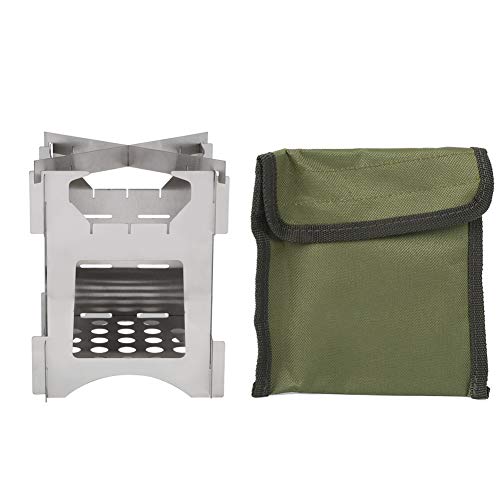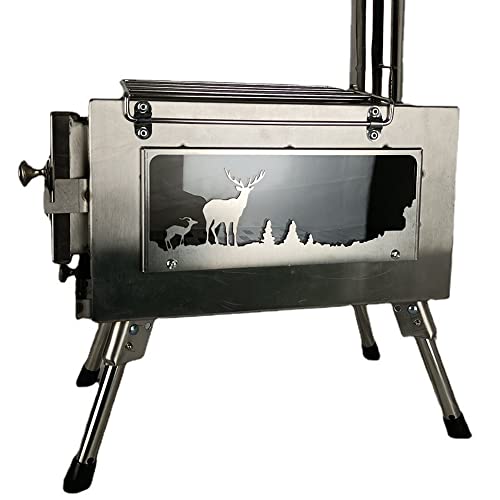11 "Faux Pas" That Are Actually Acceptable To Do With Your W…
페이지 정보

본문
 Maintaining a Wood Burning Fireplace
Maintaining a Wood Burning Fireplace The crackle of a wood-burning fireplace is a fantastic method to warm up the interior of a house. If you have one, it's important to maintain it regularly to prevent dangerous creosote build-ups.
The crackle of a wood-burning fireplace is a fantastic method to warm up the interior of a house. If you have one, it's important to maintain it regularly to prevent dangerous creosote build-ups.The airflow can be controlled by dampers, and this is a vital part of maintaining a high-quality combustion. The type of firewood used may be a factor in the way that hardwoods such as oak and ash producing less creosote than softwoods.
Energy Efficiency
Wood fireplaces are a stunning amenity that creates a cozy ambiance and provides warmth. They aren't energy efficient and could cause air pollution if they are not maintained in a timely manner. The type of wood used, the quality and condition of the firebox, the chimney installation and chimney can greatly affect the effectiveness of the unit.
Firewood is the main fuel source for a wood burners-burning stove. It is usually purchased in face cords or full cords (measured as 4'x8"x8") Before using firewood, it needs to be "seasoned" in order to decrease the amount of water in it and increase its energy density. If the wood is moist, it won't burn efficiently and will create a lot creosote. Seasoning wood typically takes months to a year or more, based on the weather and climate conditions.
A fireplace that burns wood requires a substantial investment in both money and time to keep it running properly. In addition, to purchasing a large amount of firewood, owners must regularly check and clean their fireplace. This is to ensure that the chimney is clear of obstructions, operates well, and that there is there is no combustible material near the fireplace. Regular inspections and cleaning can reduce the chance of chimney fires as well as room fires.
The smoke from wood-burning fireplaces is a source of fine particles that can cause lung damage and serious health problems, including heart attacks, cardiovascular disease and lung diseases. It also releases carbon monoxide and other toxic air pollutants including volatile organic compounds nitrogen oxides, benzene, and formaldehyde. Wood smoke may contribute to the depletion of ozone in the atmosphere, greenhouse gases and other pollutants that affect the earth's climate.
Efficiency EPA certified wood stoves use the second combustion method to reduce harmful emissions during firing. To maximize performance they require the proper size chimney as well as the installation of a flue lining. It is crucial to use well-seasoned Small Wood Burner and to avoid adding accelerants to the flame such as lighter liquid, gasoline or butane torch. This could cause a surge of fire, causing a dangerous situation. Additionally homeowners should store their firewood away from the house to avoid termite infestation.
Cleanliness
Wood-burning fire places are an excellent alternative to other heating methods. They also create a peaceful ambience. They can be used for primary or supplementary heat sources and may qualify for tax credits. However, they can be messy and require regular cleaning to avoid creosote and soot buildup. A fireplace that is dirty can release toxic odors and toxins, which can affect the quality of air in your home.
The most important thing to remember when burning a wood fireplace is to always make use of dry firewood. Using kiln dried firewood will help reduce creosote and soot buildup. Kiln dried wood is processed in a kiln or oven to get rid of all moisture. It is recommended to only burn clean, seasoned (burned) wood that has been split and stored for a few months prior to use.
Before lighting a fire take the ashes off the floor of the fireplace as well as the area around the smoke shelf. Make sure that the ashes are completely cool before taking them out of an aluminum waste bin to dispose of. With a dust pan or whisk broom as well as sweeping and dumping any other debris that may have accumulated outside the fireplace.
When cleaning a fireplace, be sure to wear gloves and an apron to shield yourself from the dust and soot that will be produced. You should clear a working area and cover any nearby furniture with drop cloths in order to protect against staining. Wear a dust mask to ensure that you don't inhale any particles of soot or ash.
Start by filling an enormous bucket with one gallon of warm water. Add 3.8 teaspoons of trisodium (TSP) as well as one cup of bleach and two tablespoons of ammonia from your home. Mix the solution well, then use a nylon brush to scrub the walls of your fireplace and the surrounding areas. After scrubbing the walls as well as the surrounding areas of your fireplace, wipe it off with an aqueous, damp cloth.
Repeat the scrubbing and wiping process until all visible deposits are removed from your fireplace. Once you're satisfied with your cleanness you can employ the glass cleaner that's safe for wood-burning stoves to clean the glass doors.
Aesthetics
Wood fireplaces are stunning and are not comparable to modern propane or gas fireplaces. Their rustic look, crackling sound of a burning fire and their cozy feel create a cozy ambience that has stood the test of time. This is a feature that many people look for when shopping for a fireplace.
While wood-burning fireplaces are great for heating, they also emit harmful gases into your home. Smoke, carbon monoxide and other gases can harm your lungs. It is crucial to have a system to eliminate these toxins, even if fireplaces are well ventilated. Many prefer a zero clearance design for wood burning fireplaces, as they reduce the amount harmful gases that are present in their homes.
There are many ways to make your wood fireplace more attractive and unique. You can paint it to match the decor of your living room or use reclaimed wooden to give it a more rustic look. You can also build an uphill stone staircase to the fireplace. This will make an interesting and enjoyable feature in your home.
You can also change the color of your chimney. The most popular color is black, which is beautiful and complements the majority of homes. Alternatively, you can paint your fireplace white which lets light into the space and creates a light and airy atmosphere. Gray is a popular option that goes with many styles and is on trend. Some homeowners even mix gray and beige together, known as greige, to celebrate this flexibility and aesthetic.
The best way to make a fireplace look less old fashioned or obtrusive is to paint it to match the walls around it. This can be done in a deep neutral that is on-trend, like grey, or a warm and earthy tone such as brick or terracotta red. The idea is to create a unified space that does not draw attention to itself, but rather blends in with the rest of the room. If you are unsure about which colour to go for, you can always ask a professional for advice.
Safety
Wood burning fireplaces can create serious safety issues if not properly maintained and operated. They emit fine particle pollution that can enter deep into the lungs, causing lung disease. They also release harmful air pollutants such as carbon monoxide volatile organic compounds, nitrogen oxides and benzene. Wood smoke is also a contributor to climate change through the release of carbon dioxide and methane.
The flue of a wood stove wood burning should be inspected and cleaned regularly to ensure it is working properly. A clean, functioning flue helps prevent dangerous carbon monoxide leaks and chimney fires.
If the flue liner is getting worn out it is recommended to replace it or repaired as soon as possible. It is also crucial to keep combustible materials away from the wood stove, including curtains, drapes and other flammable objects. Cross-ventilation is a fantastic method to move warm air around the home to ensure that it doesn't end up back up the chimney.
Clean up the ashes regularly to avoid them becoming a block to airflow and then building up too much. A lot of ash can reduce the oxygen supply to logs, reducing combustion efficiency and leading to more smoke. The ashes should be placed in a metal bucket or any other non-combustible container.
Children should be kept out from the area around the fireplace, especially when it has an open glass front. If they come in contact with hot surfaces, both during and after the fire, they may be burned. The many tools employed to maintain fireplaces such as pokers, shovels log lifers, brushes and shovels, can also be dangerous for children to handle. A three-foot "safety zone" should be established around the fireplace to prevent children from coming into contact with it.
It is also a good idea to install an carbon monoxide detector and alarm in the home, especially if there is wood stove. Carbon monoxide can accumulate when the chimney and Small wood burner wood stove aren't working properly, and is poisonous to breathe.
It is also crucial to check the state, local and tribal regulations regarding wood-burning fireplaces. These may include odor or nuisance rules, "no-burn" days and visible emission limits or opacity limits for smoke coming from chimneys of homeowners. These laws are typically designed to reduce air pollution and protect the public's health.
- 이전글10 Things You'll Need To Be Educated About Treadmill Folding 24.03.30
- 다음글btc-ті binance-тен coinbase-ге аударыңыз пин тіс бағасы 24.03.30
댓글목록
등록된 댓글이 없습니다.